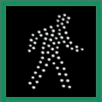( Apologies if you have alreaday responded to some items – I just cannot recall )
Travel delay run : why were 35th/West 36th Streets and West 49th/West 50th Streets chosen.What about 11th avenue, two ways in two segments, below 41st and above 45th?
add travel runs on 29/30/31st streets, on 37th /36th streets, on 9th Avenue 39th to 36th Streets and 47th to 41 Street .. on 42nd Street from Dyer to 9th Avenue , on 44th Street on 46th Street
How will “travel time runs” account for two lanes of the avenue at a stand still and grid locking side streets and the other lanes still moving ? Car obstructions in pedestrian crossing are a major factor. How will you measure them? Will you do travel time runs for pedestrians and bicycles?
Turning movement counts: They should at least include any intersection within 500 feet of school. 29th , 30th and 33rd Streets. As well as 49th ,48 , 50 , and 55 streets .Turning conflicts are a major issue. Will you measure turning speed ? Pedestrian counts: include all locations within 500 foot of school. Plus the ones above. All turning movement intersections should also get a pedestrian count.
Bicycle lanes : some cross streets chosen are in conflict with Lincoln tunnel traffic
How and when will you identify available capacity for new routing.
Both travel or parking peak hours definition need to be modified for this study in the morning peak hours are 8 am to 9: 30 am – in the evening 3:30 pm to 8 pm – on the week ends peak hours from 4 pm to 8 pm on both Saturdays and Sundays. On Jets game day on Sunday 11am to 1 pm . Many days and on Wednesday , outgoing peak hour is extended to midnight. For parking, Wednesday 3 pM to 8PM is the peak hour.
Transit analysis need to identify the delays caused by traffic obstructions or parking obstructions in bus travel lanes, non-optimal bus stops and layover area placements. (42nds street and 9th avenue for example) .
Gridlock is a major factor. For EMS and for enforcement units How will it be measured?
